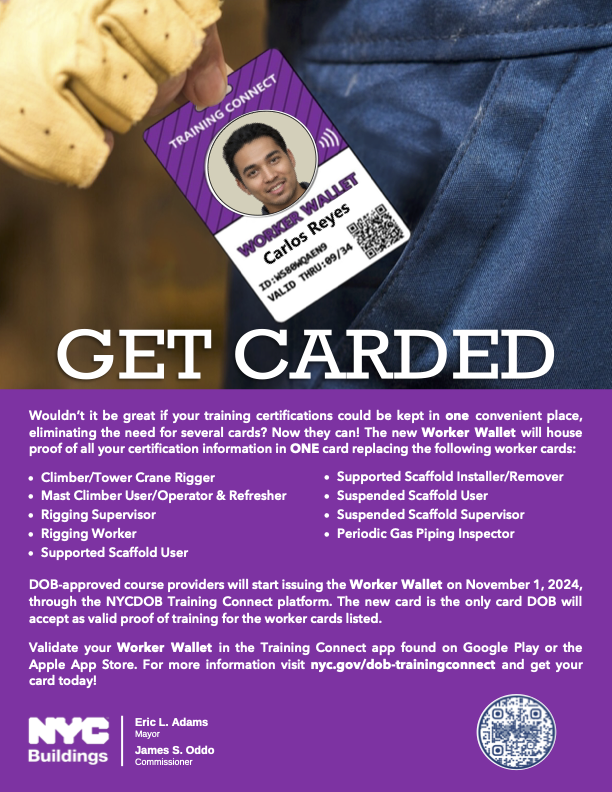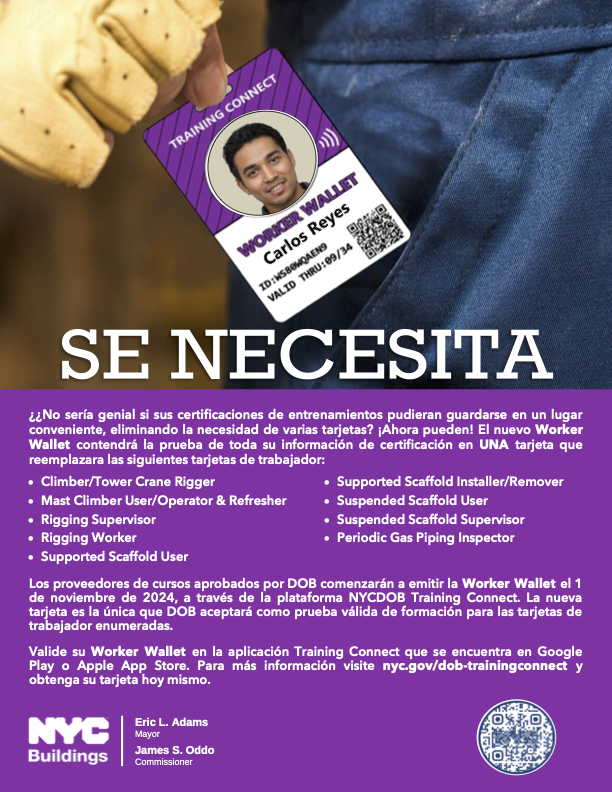September 27, 2024 SERVICE NOTICE June 2010
Starting Wednesday, October 16, 2024, all new Hoisting Machine Operator (HMO) license applications, renewal submissions, card re-issuance requests and changes to information will be submitted in DOB NOW: Licensing and will no longer be available in BIS Options.
Applicants will be able to apply for all HMO licenses, including the new limited licenses provided for in 1 RCNY 104-09:
- Class A
- Class B
- Class C (formerly C-1)
- Limited License Boom Trucks (formerly C-2)
- Limited License Sign Hanging Cranes (formerly C-3)
- NEW Limited License Articulating Boom Cranes
- NEW Limited License Mini Cranes
- NEW Limited License Telehandlers.
Holders of an HMO C-1, C-2, or C-3 license will be allowed to continue to operate the same type of equipment they are currently authorized to operate on and after November 7, 2024, and will not be required to obtain a new license card with the new HMO license name. A new license card displaying the updated license name will be issued when the license is renewed in DOB NOW: Licensing.
Applicants for the New Limited Licenses will be Allowed to Continue Operating on and After November 7, 2024
Individuals who submit an application for a Limited HMO license for an articulating boom crane, mini crane, or telehandler before November 7, 2024, in DOB NOW: Licensing will be permitted to continue to operate the hoisting machine for which they submitted a license application while their license application is in Pending Background Review or Pending QA Review status (not Pre-Filing status).
DOB NOW: BIS Options Applications
Any renewal and new license applications submitted in DOB NOW: BIS Options before October 16, 2024, will still have to be completed in DOB NOW: BIS Options, but all future transactions on that license will be performed in DOB NOW: Licensing.
License Card Reissuances & Changes to License Information
In-person requests and emails to the Licensing Unit will no longer be accepted. For renewals, license card reissuances, and requests to update current license information, login to DOB NOW, select Licensing and click on Manage Profile to submit the new information. build safe|live safe nyc.gov/buildings
Additional Information
Review the July 24, 2024 Service Notice for more information about Hoisting Machine Operator licenses.
DOB NOW Login
Use your NYC.ID account to login to DOB NOW at nyc.gov/dobnow. If you need to create an NYC.ID account, visit nyc.gov/dobnowtips.
DOB NOW Training
The Department of Buildings is conducting free training sessions to explain the new process and demonstrate how to use DOB NOW: Licensing. Visit the DOB NOW Training Page at nyc.gov/dobnowtraining to register for training and to access step-by-step guides, user manuals, and videos.
DOB NOW Inquiries & Support
To submit an inquiry about DOB NOW, visit the DOB NOW Help Form at nyc.gov/dobnowhelp.


